The origin of birthstones is believed to date back thousands of years to the time of Moses. It is believed that the Breast Plate of the High Priest was made with twelve colored gem stones representing the twelve tribes of Israel, and a corresponding gemstone was attributed to each color. Over time, people began wearing one gemstone each month, then transitioned to wearing their own birthstone all year-long. Each birthstone is said to represent magical powers, ward off evil or help cure illness. Read on as we look at each birthstone by month and what they represent.

January – Garnet
The word garnet comes from the Latin word “granatus” meaning grain or seed. This name was given to the Garnet because of its close resemblance to the pomegranate seed. The Garnet is known for its deep red color, but it also comes in other hues including, muted yellows, oranges, rosy pinks, lime green and violet. The Garnet is known to be a protective gem of travelers and is thought to be symbolic of love and the desire for a loved one’s safe travel and speedy return.
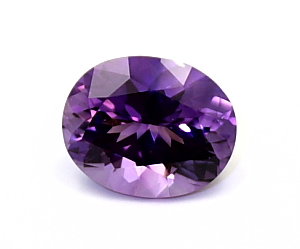
February – Amethyst
The ancient Greeks believed that this gemstone had many powers, including protection against intoxication. The word Amethyst comes from the Greek word “amethystos” meaning sober. In ancient Greece, it was common practice to serve wine from Amethyst goblets with the belief this would prevent overindulgence. Amethyst is a member of the quartz family, occurring naturally as crystals within rocks. A gift of Amethyst is symbolic of protection and the power to overcome difficulty. It is said to strengthen the bond of love in a relationship and is an ideal anniversary gift.

March – Aquamarine
This gemstone derives its name from the Roman word “Aqua” meaning water and mare meaning sea. The ancient Romans believed that the Aquamarine was sacred to Neptune, the god of the sea. Early sailors wore the Aquamarine as talismans engraved with the likeness of Neptune as protection against the dangers of the sea. Aquamarine varies in color from blue-green to a light sky blue. A gift of Aquamarine symbolizes safety and security.

April – Diamond
Known as a girl’s best friend, April’s birthstone, the Diamond, is symbolic of everlasting love and has been revered throughout history. Royalty would use diamonds to embellish their crowns, swords and jewelry. The ancient Hindus called Diamond “Vajra” meaning “lightening”, because of the sparks of light thrown off by this gem as well as for its strength. During the middle ages, the Diamond was thought to heal illnesses, but only if the ailing person took the Diamond into their bed to warm it up first.
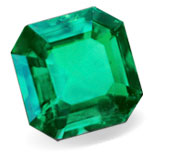
May – Emerald
The intense green of the Emerald is symbolic of spring and rebirth. The Egyptians were known to engrave Emeralds with the symbol of foliage to represent eternal youth and would bury their dead with these jewels. The ancient Romans associated the Emerald with fertility and rebirth and dedicated this gem to Venus, the goddess of love and beauty. Many people believe today that wearing an Emerald brings wisdom, growth and patience and often give a gift of an Emerald to symbolize love and fidelity.

June – Pearl
There are many beliefs that surround the origin of the Pearl. Ancient Greeks believed that Pearls were the hardened tears of joy that the goddess of love shook from her eyes as she was born from the sea. While Arab legend believes that Pearls were formed when oysters were lured from the sea by the moon and then swallowed moonlit dewdrops. The ancient Chinese believed that the Pearl originated from the brains of dragons. Today, we view Pearls as a symbol of purity, and they are often given as a gift to celebrate a marriage or a birth of a child.
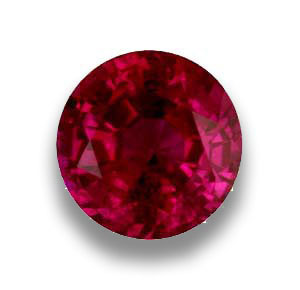
July – Ruby
The Ruby’s rich red color symbolizes love and passion. The word Ruby comes from the Latin word “ruber” meaning red. The ancient Hindus referred to this gem as “Rajnapura” meaning “King of Gems”. The Ruby is considered to be one of the most prized gems throughout history and was considered to have magical powers. It was worn to ward off evil and cure indigestion. It has been believed that the Ruby’s red glow comes from an internal flame that cannot be extinguished, making a gift of a Ruby symbolic of everlasting love.

August – Peridot
The name Peridot comes from the Arabic word “faridat,” meaning gem. Ancient Egyptians called the Peridot the “gem of the sun”, because of its sparkling brilliance when hit by the sun. It was believed that Peridot glowed even in darkness. Peridot is a mineral which is found in a variety of greens ranging from a light yellow-green to a dark olive. This gem signifies strength as well as new growth and new beginnings.
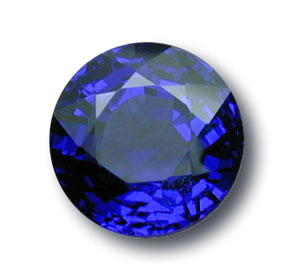
September – Blue Sapphire
The Greeks named this gem "sapphereiros," meaning blue. Many ancient civilizations believed that the world was set upon an enormous blue sapphire, which made the sky blue with its reflection. Sapphires were also thought to be protective against envy as well as poisoning. The sapphire is second only to the diamond in hardness which makes it a durable gemstone for jewelry. A sapphire represents sincerity and faithfulness, making it a beautiful gift to give to your special someone.

October – Opal
The Opal derives its name from the Latin word “opalus” meaning precious jewel. The Opal dates back to prehistoric times and was treasured for its beauty and protective powers. Opals were often set in crowns and warn in necklaces to ward off evil. Most of the world’s opal deposits are found in Southern Australia as well as Brazil and Mexico.
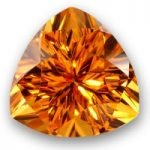
November – Citrine
This gem ranges in color from the palest yellow to a dark amber. The name is derived from the french word “citrin” meaning lemon. Citrine became popular during the Romantic Period, when artisans used it to enhance gold jewelry. Like all forms of quartz, Citrine was believed to have magical powers and was worn to ward off evil thoughts and snake venom. A gift of Citrine is symbolic of hope and strength.

December – Blue Topaz
Ancient civilizations considered this gemstone to have cooling properties as well as healing insanity, asthma, weak vision and insomnia. Its name is derived from the Sanskit word “tapas” meaning fire. Blue Topaz is the hardest of the silicate minerals and comes in a variety of colors including blue, pale green, red, yellow and pink.
 Make an Appointment
Make an Appointment 
